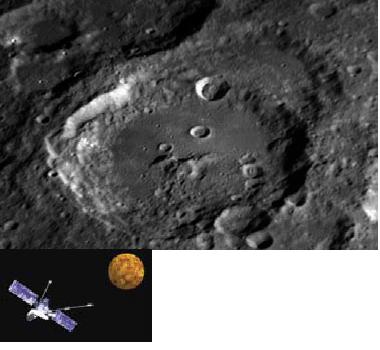Tammy Plotner and Jeff Barber, Universe Today

The Mariner spacecraft on Venus (the illustration), Morulitsus Crater on the Moon (photo)
On this day in 1963, Maarten Schmidt first measured the redshift of a distant quasar and revealed how bright these star-like objects are. In 1974, on this day, the first close-up photograph of Venus was taken by the Mariner 10 spacecraft.
And as usual last week, we will watch the moon. The most amazing formation will be a southern crater near which today passes the dividing line between day and night which continues to move and fill the moon with light - Maurolycus. Depending on the viewing time, the line of light will pass through the crater. The shadows will multiply the contrast of the surface of the crater several times and you will be able to see its route.
What is special about the crater is its dark interior and its western edge stretching along the day line. Aren't there too many southern craters for us to be sure that this is indeed the crater in question? There is no fear of Morilitsos overshadowing everyone tonight. Look for its double southern wall and the many craters at its edge.
And in the rest of the sky - we will go to the Origa group again and observe at a FIST distance from Alpha (Capella). Congratulations on your success in finding M38 in the moonlit sky. We will see this special open cluster again when the sky is darker.
https://www.hayadan.org.il/BuildaGate4/general2/data_card.php?Cat=~~~390043607~~~261&SiteName=hayadan
